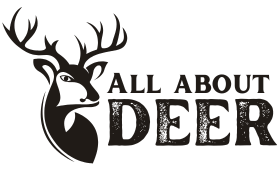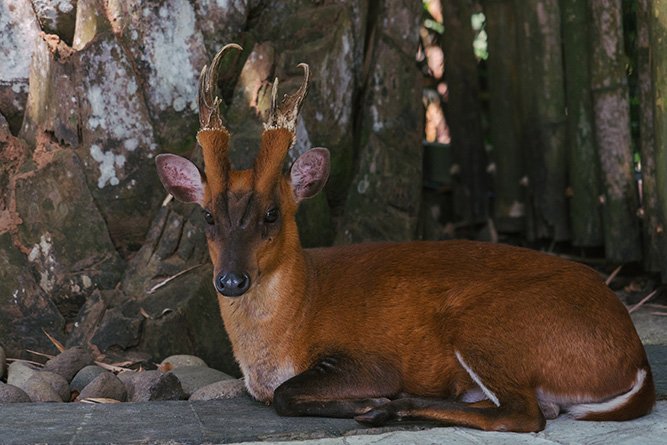Reeves’s muntjac is a remarkable deer species that has its own set of captivating features. These petite creatures, also known as barking deer, are known for their intriguing behavior and distinctive appearance.
Table of Contents
Species Data
- Class: Mammalia
- Order: Artiodactyla
- Family: Cervidae
- Scientific Name: Muntiacus reevesi
- Life Span: 10-14 years
- Height: 40-53 cm (16-21 inches)
- Weight: 17-25 pounds (8-11 kilograms)
Description
Reeves’s muntjac is a small deer species with a reddish-brown coat and short, unbranched antlers. What sets them apart is their petite size, making them one of the smallest deer species globally.
Appearance
These deer are known for their distinctive V-shaped facial markings and striking black facial stripes. Despite their diminutive size, their unique appearance makes them easily recognizable.
Behavior
Reeves’s muntjac are primarily solitary and are known for their distinctive “barking” vocalizations. They are cautious creatures and tend to be active during dawn and dusk.
Habitat
These deer are native to the forests and woodlands of Southeast Asia, including regions in China and Taiwan. They are well-adapted to both hilly and lowland terrains.
Diet and Nutrition
Reeves’s muntjac are herbivores, feeding on a diet of leaves, fruits, and vegetation found in their forested habitats.
Mating Habits
Reeves’s muntjac typically mate throughout the year, and females give birth to one fawn at a time. The gestation period is around 209 days.
Mating Behavior
- Reproduction Season: Year-round
- Pregnancy Duration: Approximately 209 days
- Baby Carrying: Female deer care for their fawns
- Independent Age: Fawns become independent at around 6-9 months
- Female Name: Doe
- Male Name: Buck
- Baby Name: Fawn
5 Fun Facts for Kids
- Reeves’s muntjac are known for their distinct barking sounds, which they use to communicate with each other.
- These deer have a unique habit of tusk-like upper canines that protrude from their mouths.
- They are excellent swimmers and can cross rivers and streams.
- Reeves’s muntjac are often referred to as “barking deer” due to their vocalizations.
- Despite their small size, they are skilled jumpers and can clear obstacles with ease.


